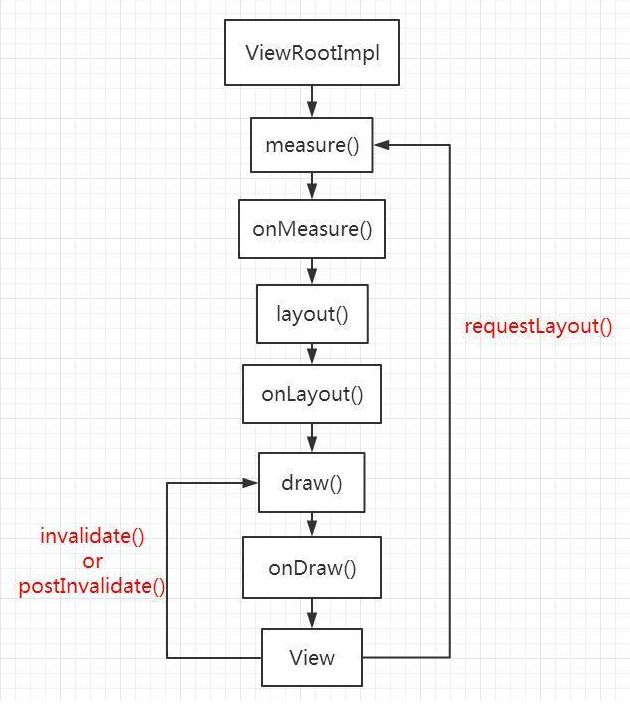RatioImageView实现ImageView按比例缩放等效果
0. 源码地址
https://github.com/zhxhcoder/XImageView
1. 引用方法
compile 'com.zhxh:ximageviewlib:1.2'
2. 使用方法
举个栗子:
上面riv_height_to_width_ratio=0.48
已经定义layout_width="100dp" 计算得出 layout_height="48dp"
实现效果
3. 源码实现
3.1 属性定义与描述
3.2 代码实现
1,属性初始化
从AttributeSet 中初始化相关属性
private void init(AttributeSet attrs) {
TypedArray a = getContext().obtainStyledAttributes(attrs,
R.styleable.RatioImageView);
mIsWidthFitDrawableSizeRatio = a.getBoolean(R.styleable.RatioImageView_riv_is_width_fix_drawable_size_ratio,
mIsWidthFitDrawableSizeRatio);
mIsHeightFitDrawableSizeRatio = a.getBoolean(R.styleable.RatioImageView_riv_is_height_fix_drawable_size_ratio,
mIsHeightFitDrawableSizeRatio);
mMaxWidthWhenWidthFixDrawable = a.getDimensionPixelOffset(R.styleable.RatioImageView_riv_max_width_when_width_fix_drawable,
mMaxWidthWhenWidthFixDrawable);
mMaxHeightWhenHeightFixDrawable = a.getDimensionPixelOffset(R.styleable.RatioImageView_riv_max_height_when_height_fix_drawable,
mMaxHeightWhenHeightFixDrawable);
mHeightRatio = a.getFloat(
R.styleable.RatioImageView_riv_height_to_width_ratio, mHeightRatio);
mWidthRatio = a.getFloat(
R.styleable.RatioImageView_riv_width_to_height_ratio, mWidthRatio);
mDesiredWidth = a.getDimensionPixelOffset(R.styleable.RatioImageView_riv_width, mDesiredWidth);
mDesiredHeight = a.getDimensionPixelOffset(R.styleable.RatioImageView_riv_height, mDesiredHeight);
a.recycle();
}
2,关键数据初始化
mDrawableSizeRatio = -1f; // src图片(前景图)的宽高比例
在构造函数中调用以下代码,当mDrawable不为空时
mDrawableSizeRatio = 1f * getDrawable().getIntrinsicWidth()
/ getDrawable().getIntrinsicHeight();
其他变量初始化
private boolean mIsWidthFitDrawableSizeRatio; // 宽度是否根据src图片(前景图)的比例来测量(高度已知)
private boolean mIsHeightFitDrawableSizeRatio; // 高度是否根据src图片(前景图)的比例来测量(宽度已知)
private int mMaxWidthWhenWidthFixDrawable = -1; // 当mIsWidthFitDrawableSizeRatio生效时,最大宽度
private int mMaxHeightWhenHeightFixDrawable = -1; // 当mIsHeightFitDrawableSizeRatio生效时,最大高度
// 宽高比例
private float mWidthRatio = -1; // 宽度 = 高度*mWidthRatio
private float mHeightRatio = -1; // 高度 = 宽度*mHeightRatio
private int mDesiredWidth = -1; // 宽度和高度,避免layout_width/layout_height会在超过屏幕尺寸时特殊处理的情况
private int mDesiredHeight = -1;
3,重新生成所需的drawable
我们覆盖ImageView的setImageResource与setImageDrawable函数,对生成的drawable对象重新自定义
@Override
public void setImageResource(int resId) {
super.setImageResource(resId);
reSetDrawable();
}
@Override
public void setImageDrawable(Drawable drawable) {
super.setImageDrawable(drawable);
reSetDrawable();
}
自定义所需的drawable对象
private void reSetDrawable() {
Drawable drawable = getDrawable();
if (drawable != null) {
// 发生变化,重新调整布局
if (mIsWidthFitDrawableSizeRatio || mIsHeightFitDrawableSizeRatio) {
float old = mDrawableSizeRatio;
mDrawableSizeRatio = 1f * drawable.getIntrinsicWidth()
/ drawable.getIntrinsicHeight();
if (old != mDrawableSizeRatio && mDrawableSizeRatio > 0) {
requestLayout();
}
}
}
}
从上面代码我们看到,当图片本身比例与定义比例不同时,会调用 requestLayout();方法重新调整布局。
该方法的作用是什么呢?
我们进入 requestLayout()方法:
/**
* Call this when something has changed which has invalidated the
* layout of this view. This will schedule a layout pass of the view
* tree. This should not be called while the view hierarchy is currently in a layout
* pass ({@link #isInLayout()}. If layout is happening, the request may be honored at the
* end of the current layout pass (and then layout will run again) or after the current
* frame is drawn and the next layout occurs.
*
* Subclasses which override this method should call the superclass method to
* handle possible request-during-layout errors correctly.
*/
@CallSuper
public void requestLayout() {
if (mMeasureCache != null) mMeasureCache.clear();
if (mAttachInfo != null && mAttachInfo.mViewRequestingLayout == null) {
// Only trigger request-during-layout logic if this is the view requesting it,
// not the views in its parent hierarchy
ViewRootImpl viewRoot = getViewRootImpl();
if (viewRoot != null && viewRoot.isInLayout()) {
if (!viewRoot.requestLayoutDuringLayout(this)) {
return;
}
}
mAttachInfo.mViewRequestingLayout = this;
}
mPrivateFlags |= PFLAG_FORCE_LAYOUT;
mPrivateFlags |= PFLAG_INVALIDATED;
if (mParent != null && !mParent.isLayoutRequested()) {
mParent.requestLayout();
}
if (mAttachInfo != null && mAttachInfo.mViewRequestingLayout == this) {
mAttachInfo.mViewRequestingLayout = null;
}
}
上面是Android view中该方法的定义,从代码中我们可以看出它首先先判断当前View树是否正在布局流程,接着为当前子View设置标记位,该标记位的作用就是标记了当前的View是需要进行重新布局的,接着调用mParent.requestLayout方法,这个十分重要,因为这里是向父容器请求布局,即调用父容器的requestLayout方法,为父容器添加PFLAG_FORCE_LAYOUT标记位,而父容器又会调用它的父容器的requestLayout方法,即requestLayout事件层层向上传递,直到DecorView,即根View,而根View又会传递给ViewRootImpl,也即是说子View的requestLayout事件,最终会被ViewRootImpl接收并得到处理。可以看出这种向上传递的流程,其实是采用了责任链模式,即不断向上传递该事件,直到找到能处理该事件的上级,在这里,只有ViewRootImpl能够处理requestLayout事件。
@Override
public void requestLayout() {
if (!mHandlingLayoutInLayoutRequest) {
checkThread();
mLayoutRequested = true;
scheduleTraversals();
}
}
我们进一步深入,可以看出在ViewRootImpl中,重写了requestLayout方法。
在这里,调用了scheduleTraversals方法,这个方法是一个异步方法,最终会调用到ViewRootImpl#performTraversals方法,这也是View工作流程的核心方法,在这个方法内部,分别调用measure、layout、draw方法来进行View的三大工作流程,对于三大工作流程,前几篇文章已经详细讲述了,这里再做一点补充说明。
先看View#measure方法:
public final void measure(int widthMeasureSpec, int heightMeasureSpec) {
...
if ((mPrivateFlags & PFLAG_FORCE_LAYOUT) == PFLAG_FORCE_LAYOUT ||
widthMeasureSpec != mOldWidthMeasureSpec ||
heightMeasureSpec != mOldHeightMeasureSpec) {
...省略无关代码...
if (cacheIndex < 0 || sIgnoreMeasureCache) {
// measure ourselves, this should set the measured dimension flag back
onMeasure(widthMeasureSpec, heightMeasureSpec);
mPrivateFlags3 &= ~PFLAG3_MEASURE_NEEDED_BEFORE_LAYOUT;
}
...省略无关代码...
mPrivateFlags |= PFLAG_LAYOUT_REQUIRED;
}
}
首先是判断一下标记位,如果当前View的标记位为PFLAG_FORCE_LAYOUT,那么就会进行测量流程,调用onMeasure,对该View进行测量,接着最后为标记位设置为PFLAG_LAYOUT_REQUIRED,这个标记位的作用就是在View的layout流程中,如果当前View设置了该标记位,则会进行布局流程。具体可以看如下View#layout源码:
public void layout(int l, int t, int r, int b) {
...省略无关代码...
//判断标记位是否为PFLAG_LAYOUT_REQUIRED,如果有,则对该View进行布局
if (changed || (mPrivateFlags & PFLAG_LAYOUT_REQUIRED) == PFLAG_LAYOUT_REQUIRED) {
onLayout(changed, l, t, r, b);
//onLayout方法完成后,清除PFLAG_LAYOUT_REQUIRED标记位
mPrivateFlags &= ~PFLAG_LAYOUT_REQUIRED;
ListenerInfo li = mListenerInfo;
if (li != null && li.mOnLayoutChangeListeners != null) {
ArrayList listenersCopy =
(ArrayList)li.mOnLayoutChangeListeners.clone();
int numListeners = listenersCopy.size();
for (int i = 0; i < numListeners; ++i) {
listenersCopy.get(i).onLayoutChange(this, l, t, r, b, oldL, oldT, oldR, oldB);
}
}
}
//最后清除PFLAG_FORCE_LAYOUT标记位
mPrivateFlags &= ~PFLAG_FORCE_LAYOUT;
mPrivateFlags3 |= PFLAG3_IS_LAID_OUT;
}
从上面的分析可以看出当子View调用requestLayout方法,会标记当前View及父容器,同时逐层向上提交,直到ViewRootImpl处理该事件,ViewRootImpl会调用三大流程,从measure开始,对于每一个含有标记位的view及其子View都会进行测量、布局、绘制。
另外我也在这里简单介绍下当调用invalidate和postInvalidate时,View的内部调用逻辑。
直接上结论:
当子View调用了invalidate方法后,会为该View添加一个标记位,同时不断向父容器请求刷新,父容器通过计算得出自身需要重绘的区域,直到传递到ViewRootImpl中,最终触发performTraversals方法,进行开始View树重绘流程(只绘制需要重绘的视图)。
回到,XimageView中,我们知道,当调用requestLayout时会调用 onMeasure和onLayout以及onDraw函数,因为比例发生变化,我们需要重新测量,方法如下:
@Override
protected void onMeasure(int widthMeasureSpec, int heightMeasureSpec) {
// 优先级从大到小:
// mIsWidthFitDrawableSizeRatio mIsHeightFitDrawableSizeRatio
// mWidthRatio mHeightRatio
if (mDrawableSizeRatio > 0) {
// 根据前景图宽高比例来测量view的大小
if (mIsWidthFitDrawableSizeRatio) {
mWidthRatio = mDrawableSizeRatio;
} else if (mIsHeightFitDrawableSizeRatio) {
mHeightRatio = 1 / mDrawableSizeRatio;
}
}
if (mHeightRatio > 0 && mWidthRatio > 0) {
throw new RuntimeException("高度和宽度不能同时设置百分比!!");
}
if (mWidthRatio > 0) { // 高度已知,根据比例,设置宽度
int height = 0;
if (mDesiredHeight > 0) {
height = mDesiredHeight;
} else {
height = MeasureSpec.getSize(heightMeasureSpec);
}
int width = (int) (height * mWidthRatio);
if (mIsWidthFitDrawableSizeRatio && mMaxWidthWhenWidthFixDrawable > 0
&& width > mMaxWidthWhenWidthFixDrawable) { // 限制最大宽度
width = mMaxWidthWhenWidthFixDrawable;
height = (int) (width / mWidthRatio);
}
super.onMeasure(MeasureSpec.makeMeasureSpec(width, MeasureSpec.EXACTLY),
MeasureSpec.makeMeasureSpec(height, MeasureSpec.EXACTLY));
} else if (mHeightRatio > 0) { // 宽度已知,根据比例,设置高度
int width = 0;
if (mDesiredWidth > 0) {
width = mDesiredWidth;
} else {
width = MeasureSpec.getSize(widthMeasureSpec);
}
int height = (int) (width * mHeightRatio);
if (mIsHeightFitDrawableSizeRatio && mMaxHeightWhenHeightFixDrawable > 0
&& height > mMaxHeightWhenHeightFixDrawable) { // 限制最大高度
height = mMaxHeightWhenHeightFixDrawable;
width = (int) (height / mHeightRatio);
}
super.onMeasure(MeasureSpec.makeMeasureSpec(width, MeasureSpec.EXACTLY),
MeasureSpec.makeMeasureSpec(height, MeasureSpec.EXACTLY));
} else if (mDesiredHeight > 0 && mDesiredWidth > 0) { // 当没有设置其他属性时,width和height必须同时设置才生效
int width = mDesiredWidth;
int height = mDesiredHeight;
super.onMeasure(MeasureSpec.makeMeasureSpec(width, MeasureSpec.EXACTLY),
MeasureSpec.makeMeasureSpec(height, MeasureSpec.EXACTLY));
} else { // 系统默认测量
super.onMeasure(widthMeasureSpec, heightMeasureSpec);
}
}
代码就是根据当前配置的比例对widthMeasureSpec和heightMeasureSpec重新赋值。
因为我们并没有改变ImageView的布局和绘制,所以当重新测量后,仍会按系统默认的方式重新布局和绘制。

